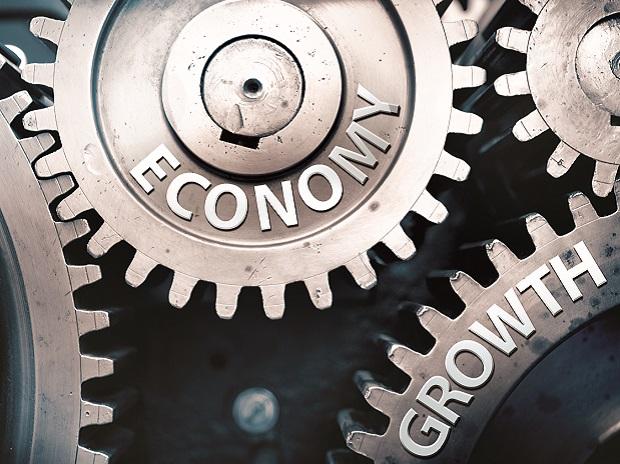[ad_1]
The Economic Survey for 2022-23, tabled in Parliament on Tuesday, says that the recovery after Covid-19 is complete and exudes confidence that the economy is poised to reap the benefits of reforms undertaken by the Modi government in its two terms so far once external shocks fade.
It flagged external concerns including muted global demand, which may batter exports, and high commodity prices, which may widen the current account deficit (CAD).
The Survey wanted policymakers to take more steps to make India a favourable destination for multinational corporations. This may make the economy grow 7-8 per cent a year in the medium term.
Prime Minister Narendra Modi said: “The Economic Survey presents a comprehensive analysis of India’s growth trajectory including the global optimism towards our nation, focus on infra, growth in agriculture, industries and emphasis on futuristic sectors.”
A day ahead of the Budget, the Survey said the government was on track to meet the fiscal deficit target of 6.4 per cent of GDP despite higher subsidies and cuts in taxes on fuels and certain imported items during 2022-23.
The Survey said capex-led growth, focused by the Budget for 2022-23, would enable India to keep the growth-interest rate differential positive, leading to a sustainable government debt to GDP ratio in the medium run.
It, thus, indicated the Budget should continue to lay emphasis on government capital expenditure.
It also reminded the government about adopting a fiscal consolidation strategy, saying the discipline translated into a fiscal stimulus for all sections of the economy through lower interest rates.
To help start-ups come back to India from other countries, the Survey suggested further simplifying employee stock options and multiple layers of taxation, and doing away with uncertainty due to litigation.
However, the Survey, penned by Chief Economic Advisor V Anantha Nageswaran and his team in North Block, did not come up with big-bang ideas to at least stir debate on policy making. In the past, Surveys did float the ideas of Jan Dhan-Aadhaar-Mobile (JAM) trinity, universal basic income, a bad bank, and printing more money. Though not all were accepted by the government, they started discussion around policy making.
For next fiscal year, the Survey is hopeful that the economy will grow by 6.5 per cent in normal circumstances. However, growth can be 6-6.8 per cent, depending on global risks. It said the economy appeared to have staged full-scale recovery in the previous year after Covid-induced lockdowns hit it.
The Survey equated reforms by the Modi government, such as the push to infrastructure, the JAM trinity, digitisation, simplifying the regulatory framework through the Real Estate Regulation Act, the Insolvency and Bankruptcy Code, tax reforms in goods and services tax, tweaking corporate tax rates, and increasing agricultural productivity, with the ones undertaken by the previous BJP-run governments during 1998-2002 in the sense that the steps taken then yielded benefits later — 2003-08.
Pointing out that the financial sector and corporate balance sheets were in good shape, the Survey said the restored credit cycle would itself put the Indian economy on an annual 6.5 per cent growth path in the medium term 2023-30.
To take growth beyond 6.5 per cent a year, the Survey reminded policymakers that given the global policy uncertainties, multinational firms are gradually exploring strategies to diversify their production bases and supply chains.
“Further reforms are needed to ensure that economic growth can both accelerate and be sustained at higher levels, to deliver a better quality of life,” said the Survey.
Reforms highlighted by the Survey include dismantling the licensing, inspection, and compliance regime, besides power and factor reforms by state governments. It should be noted that among factor reforms, four labour codes are yet to be introduced despite the majority of the states drafting rules on them.
Apart from these, education and skilling must be given emphasis to make them match the requirements of modern industry and technologies, the Survey emphasised.
It also called for reducing public-sector debt through asset monetisation, which, it says, could raise sovereign credit ratings and help in reducing the cost of capital.
Make in India 2.0 is now focusing on 27 sectors. including drones and robotics. In pursuit of the objectives of Make in India, the government has launched production-linked incentives. As of December 22, 2022, 717 applications have been approved under 14 schemes.
However, the Survey said entrenched inflation might prolong the tightening cycle by the Reserve Bank of India and, therefore, borrowing costs might stay “higher for longer”.
On the external front, the Survey said the export outlook might remain flat in the coming year if global growth did not pick up in 2023. However, diversifying product baskets and destinations through free-trade agreements (FTAs) may help.
It highlighted the need for closely monitoring the CAD, which may continue to widen because of elevated global commodity prices. It widened to 4.4 per cent of GDP in the second quarter of this fiscal year.
The Survey did not rule out a further depreciation of the rupee, saying although better-performing than most other currencies, the rupee might weaken against the dollar with the likelihood of further increases in policy rates by the US Federal Reserve.

[ad_2]
Source link



